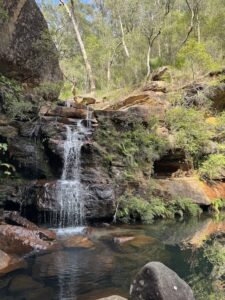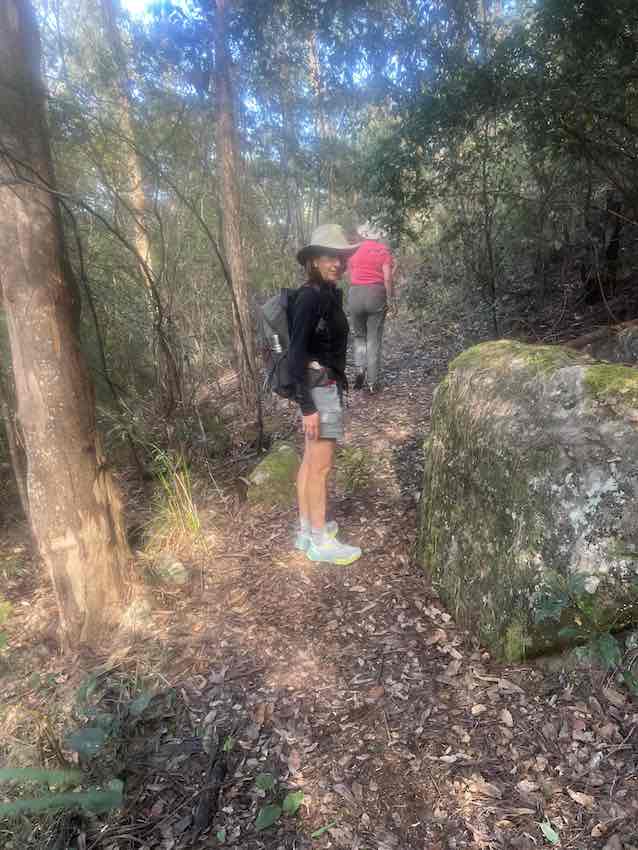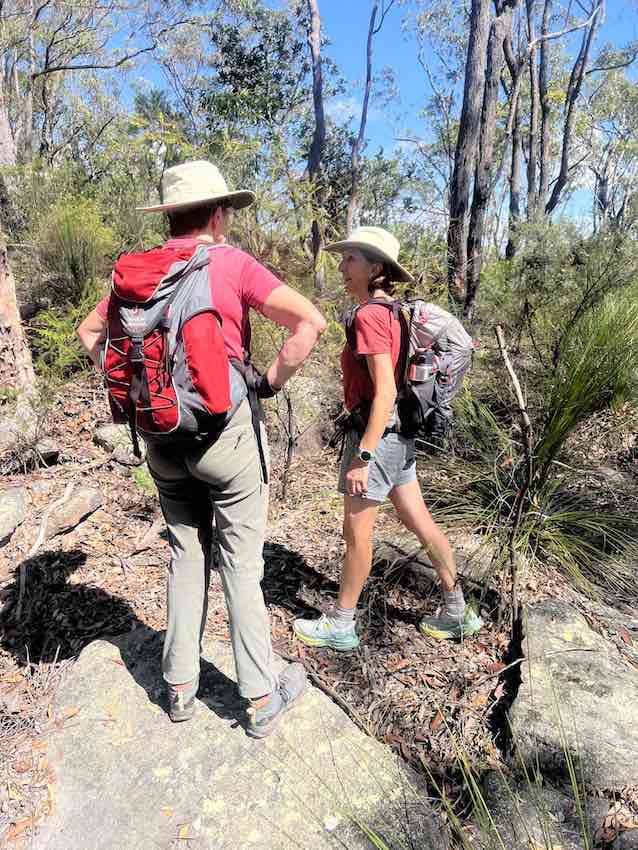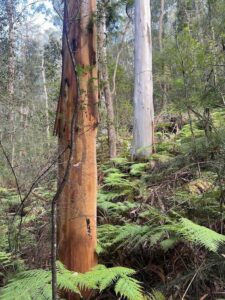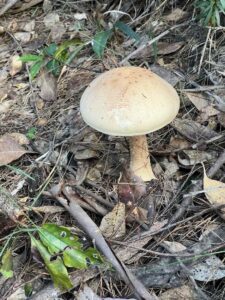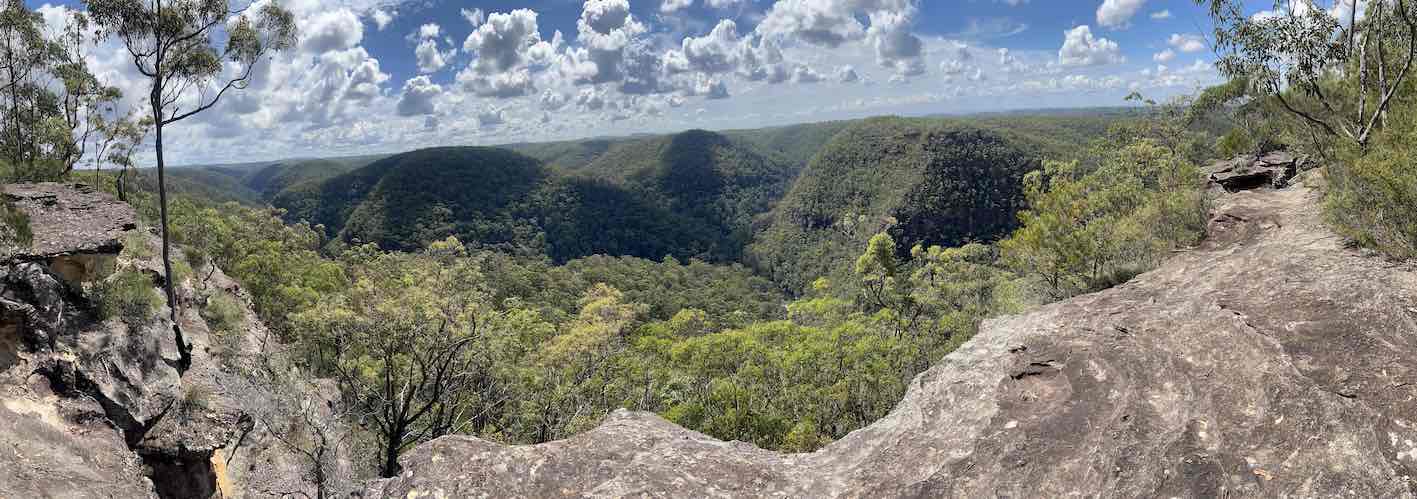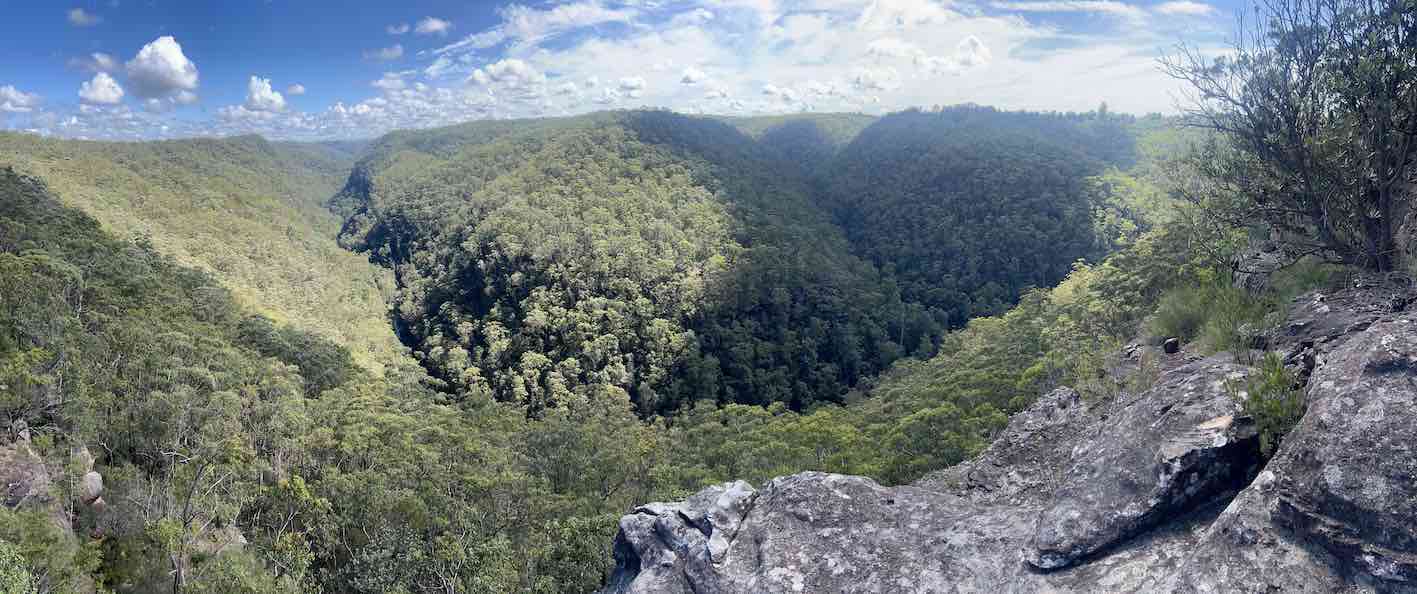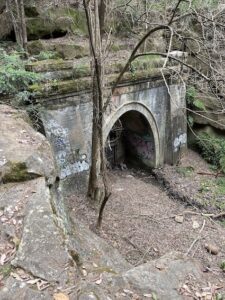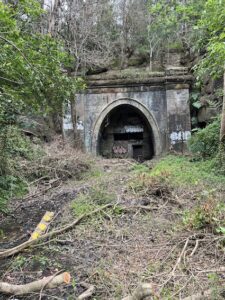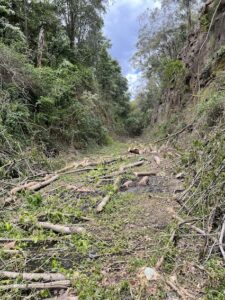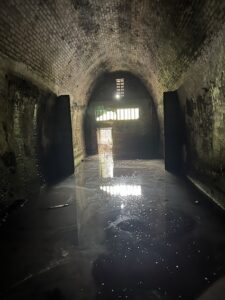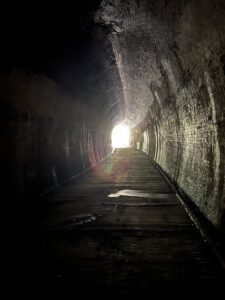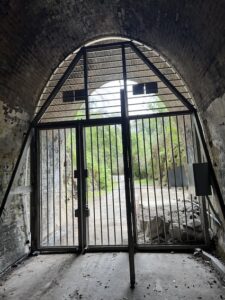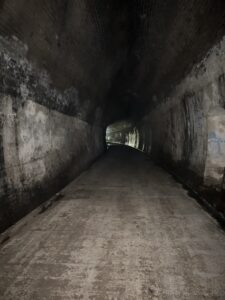We could, actually do this walk from home, but it would make for a long day, and as the weather forecast was for temperatures in the mid-30s (Centigrade), we opted to drive to the car-parking pot on the road to Red Hands Cave.
The route from there is a relatively popular one in NSW terms, which means that if you are careful, there is a trail to follow. Mostly, as I discovered many years ago, the presence of a track on a maps simply means that people have walked that way before and so it is possible, but there may be no real path to follow. Anyway, this path was relatively easy to follow: at crucial points there were either ribbons (yellow or pink) to show that one is still on the track, or there were arrows scraped onto a rock face pointing which way to go.
It took us quite a while to get there, but Grey Hat Falls is a beautiful place.
It reminded us again how we have come to live in such a spectacular place here. When we arrived there were no other visitors, although we met half-a-dozen as we walked back to the car – it’s a well known picnic spot and swimming hole.

